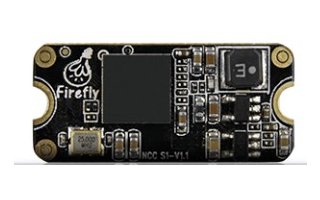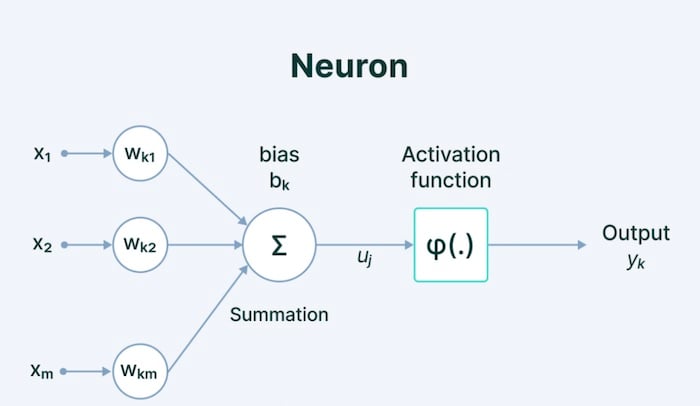PLAI是一个基于PyTorch的神经网络量化工具 - 用于将浮点神经网络转换为定点 神经网络实现(给GTI 2801s使用), 或从头开始训练定点模型。 PLAI使用主机的CPU和GPU进行训练,使用GTI NPU USB Dongle进行推理验证。
PLAI现支持GNet1、GNet18和GNetfc三种基于VGG-16的模型。
PLAI运行硬件要求如下:
- Intel i5 3.0 GHz及以上主频或者更高性能CPU (Intel i7为较佳选择)
- 8 GB及以上内存
- 独立显卡6GB及以上显存,推荐使用GTX 1060及以上显卡,AMD显卡不适用。(此项为可选,但强烈推荐,可大大缩短训练时间)
PLAI最终会使用USB Dongle进行推理测试,如果有则可以进行配置使用。
PLAI现支持以下系统:
- Ubuntu LTS 16.04
- Windows 10
- Python3
- PyTorch
- OpenCV
- CUDA 9.0及以上版本(可选)
这里以使用Miniconda进行环境配置为例。
安装过程如下:
ubunut16.04:~$ sudo chmod +x Downloads/Miniconda3-latest-Linux-x86_64.sh ubunut16.04:~$ ./Downloads/Miniconda3-latest-Linux-x86_64.sh Welcome to Miniconda3 4.5.11 In order to continue the installation process, please review the license agreement. Please, press ENTER to continue >>> (回车) ... Do you accept the license terms? [yes|no] [no] >>> yes(回车) ... - Press CTRL-C to abort the installation - Or specify a different location below [/home/firefly/miniconda3] >>> (回车) ... (安装过程) Do you wish the installer to prepend the Miniconda3 install location to PATH in your /home/firefly/.bashrc ? [yes|no] [no] >>> yes(回车) 以上将Miniconda安装在用户根目录miniconda3下,同时设置默认使用Miniconda的程序。
可以通过以下操作使Miniconda生效并测试:
ubunut16.04:~$ source ~/.bashrc ubunut16.04:~$ conda -V conda 4.5.11 接着,如果有英伟达独立显卡加速,可以通过以下操作安装PyTorch和OpenCV:
否则,请执行以下操作:
ubunut16.04:~$ conda install pytorch-cpu torchvision-cpu -c pytorch ubunut16.04:~$ pip install opencv-contrib-python 如果有显卡加速可参考此页面进行安装配置,否则可跳过此步骤。
cuda安装操作摘抄如下:
ubunut16.04:~$ wget https://developer.download.nvidia.com/compute/cuda/repos/ubuntu1604/x86_64/cuda-repo-ubuntu1604_10.0.130-1_amd64.deb ubunut16.04:~$ sudo dpkg -i cuda-repo-ubuntu1604_10.0.130-1_amd64.deb ubunut16.04:~$ sudo apt-key adv --fetch-keys https://developer.download.nvidia.com/compute/cuda/repos/ubuntu1604/x86_64/7fa2af80.pub ubunut16.04:~$ sudo apt-get update ubunut16.04:~$ sudo apt-get install cuda 最后,进行USB Dongle配置(可选),可在PLAI目录下执行以下操作配置并验证:
ubunut16.04:~/PLAI$ sudo cp lib/python/gtilib/*.rules /etc/udev/rules.d/ ubunut16.04:~/PLAI$ ls /dev/sg* -l crw-rw-rw- 1 root disk 21, 0 11月 20 10:28 /dev/sg0 crw-rw-rw- 1 root disk 21, 1 11月 20 10:28 /dev/sg1 如果出现未找到设备的情况请参考常见问题进行排查。
待完善…(可部分参考Ubuntu的配置过程)
以下操作可测试环境完整性,如无错误,则配置完成。
ubunut16.04:~$ python Python 3.7.0 (default, Jun 28 2018, 13:15:42) [GCC 7.2.0] :: Anaconda, Inc. on linux Type "help", "copyright", "credits" or "license" for more information. >>> import torch,cv2 >>> torch.cuda.is_available() True >>> - num_classes - 数据集分类个数,即data/train和data/val中的文件夹(分类)数
- max_epoch - 所有训练向量一次用于更新权重的次数
- learning_rate - 确定权重变化的速度
- train_batch_size - 根据GPU内存设置
- test_batch_size - 根据GPU内存设置
- mask_bits - 表示每个主层(卷积层)的掩码
- act_bits - 表示每个主层(卷积层)的激活参数
- resume - 设置是否从一个已知的checkpoint中开始训练
- finetune - 可选项, 启用此项通常能得到更高的精度
- full - 设置是否训练一个全精度模型
mask_bits和act_bits参数参考如下:
-
GNetfc
- mask_bits: 3,3,1,1,1,1
- act_bits: 5,5,5,5,5,5
-
GNet18
- mask_bits: 3,3,3,3,1
- act_bits: 5,5,5,5,5
-
GNet1
- mask_bits: 3,3,1,1,1
- act_bits: 5,5,5,5,5
PLAI.py暂不支持命令行参数,需要修改PLAI.py源码。
通常修改源码位置大约在142行,原始内容如下:
gtiPLAI = PLAI(num_classes=2, data_dir=data_dir, checkpoint_dir=checkpoint_dir, model_type=0, module_type=1, device_type=1) - num_classes - 可在training.json中设置
- data_dir - 默认为data目录
- checkpoint_dir - 默认为checkpoint目录
- model_type - 设置训练的模型,0: GNetfc, 1: GNet18, 2:GNet1
- module_type - 0: Conv(w/o bias) + bn + bias,1: Conv(w/ bias) + bn
- device_type - 用于推理的GTI设备类型,ftdi: 0, emmc: 1
将训练图片数据按类型存放到PLAI data目录下以类型名命名的文件夹中,然后调整training.json和修改PLAI.py(默认网络模型为GNetfc)在PLAI根目录下执行以下操作即可。
ubunut16.04:~$ python PLAI.py 训练结束会生成coefDat_2801.dat、coefBin_2801.bin(GNetfc没有此文件)和data/pic_label.txt,如果是GNet1可用到AI资料U盘中的sample中测试。 其中userinput.txt可在PLAI nets目录下找到,如netConfig_2801_gnet1.txt。使用示例如下:
liteSample -c coefDat_2801.dat -u netConfig_2801_gnet1.txt -f coefBin_2801.bin -l pic_label.txt
测试时请注意userinput.txt即-u参数文件中的设备节点是否正确。
-
WINDOWS
+关注
关注
4文章
3586浏览量
89922 -
嵌入式主板
+关注
关注
7文章
6092浏览量
35835 -
Firefly
+关注
关注
2文章
539浏览量
7211
发布评论请先 登录
相关推荐
MATLAB神经网络工具箱函数
labview BP神经网络的实现
【PYNQ-Z2试用体验】神经网络基础知识
如何构建神经网络?
轻量化神经网络的相关资料下载
卷积神经网络一维卷积的处理过程
基于Hopfield神经网络的图像矢量量化
fireflyNCC S1 神经网络计算卡简介

fireflyNCC S1神经网络计算卡介绍

神经网络量化:它是什么,它与TinyML有什么关系?





 fireflyNCC S1--PLAI神经网络量化工具介绍
fireflyNCC S1--PLAI神经网络量化工具介绍











评论